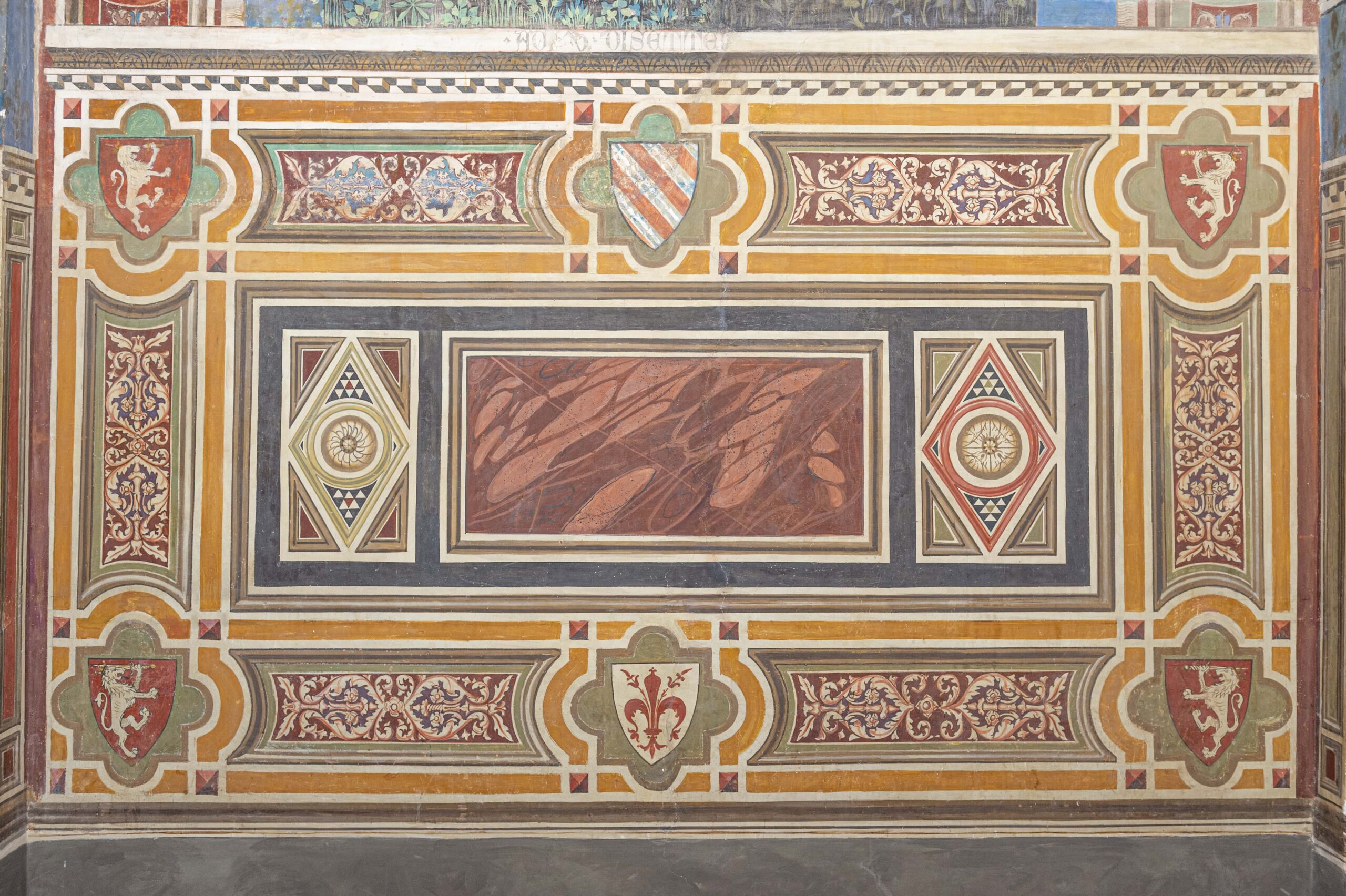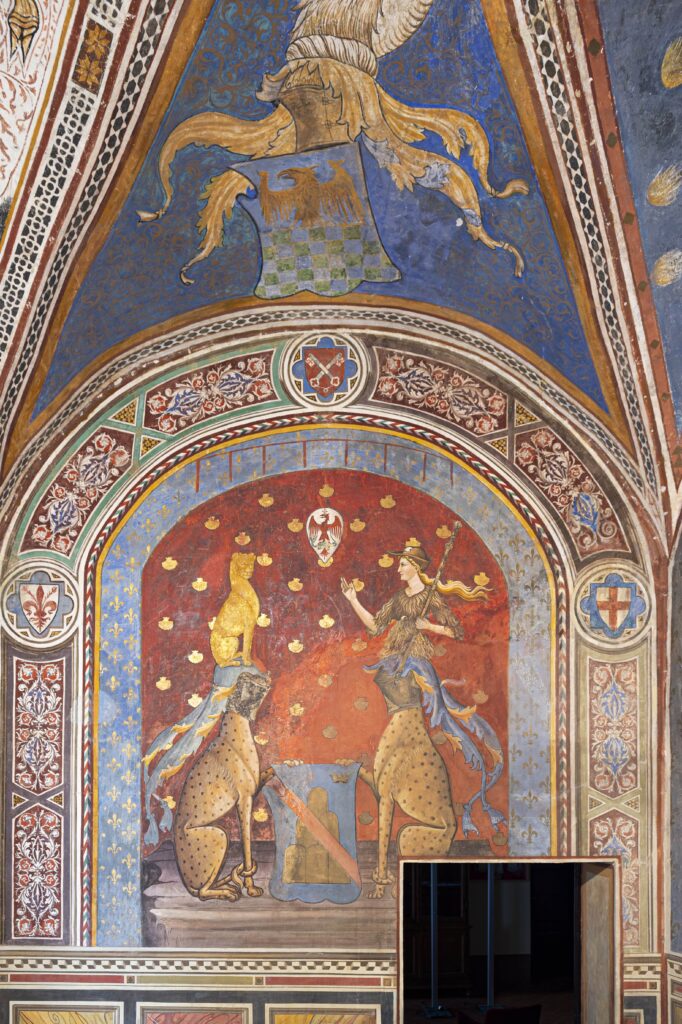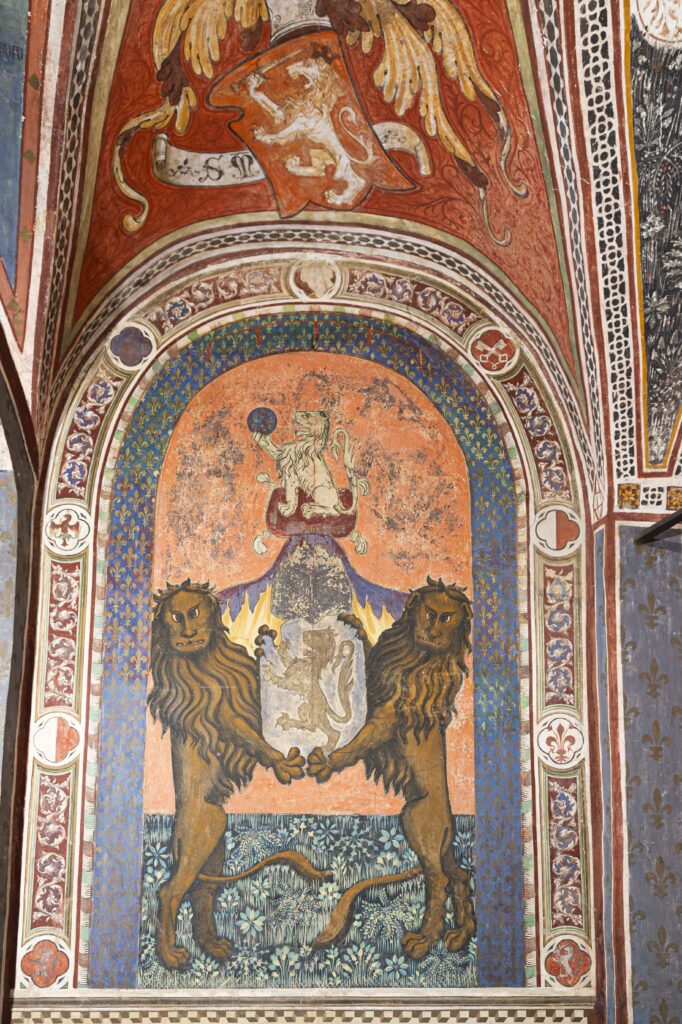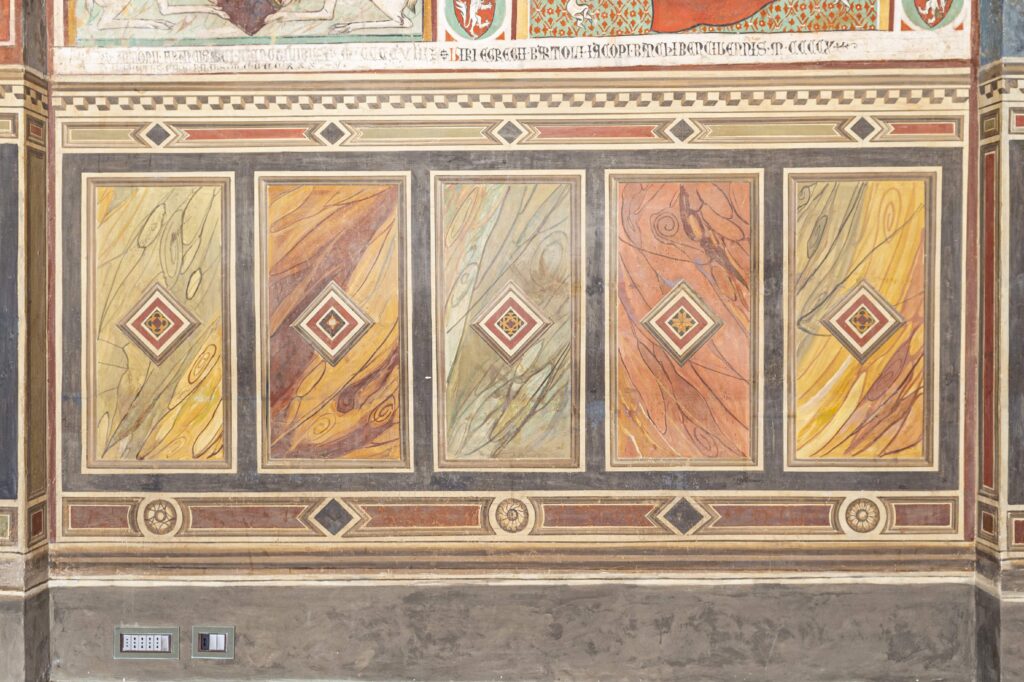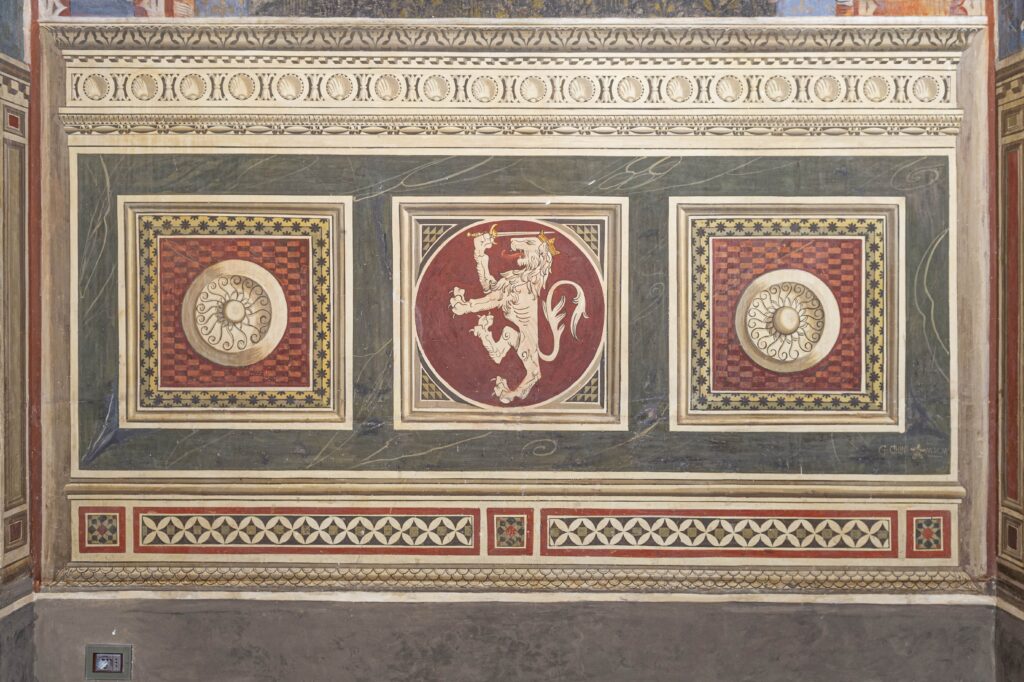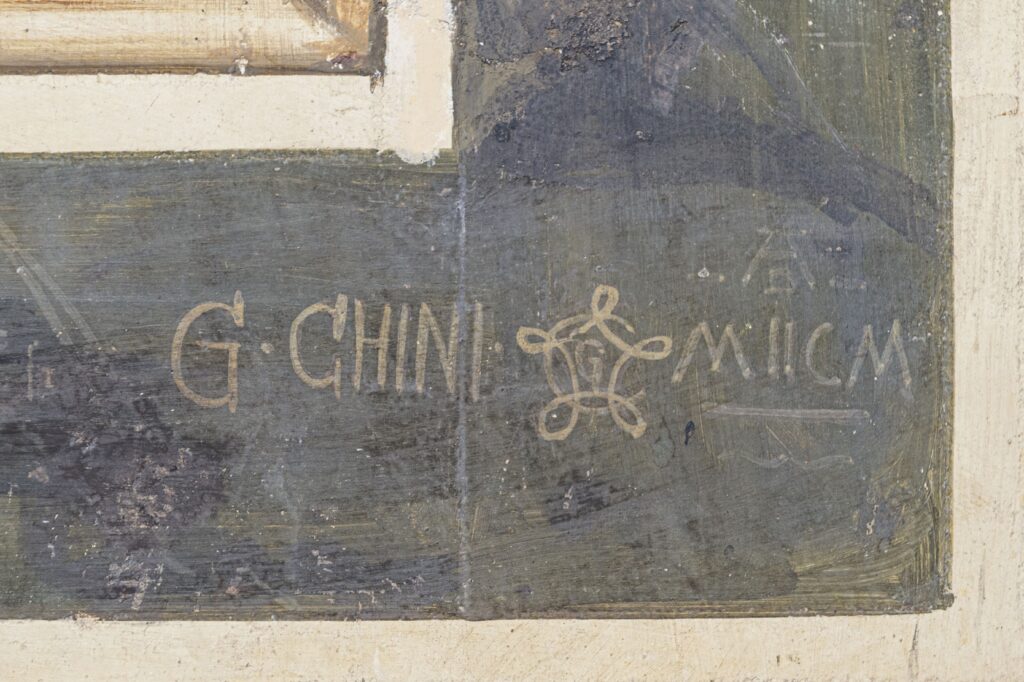Town Hall of San Miniato, Museum
San Miniato
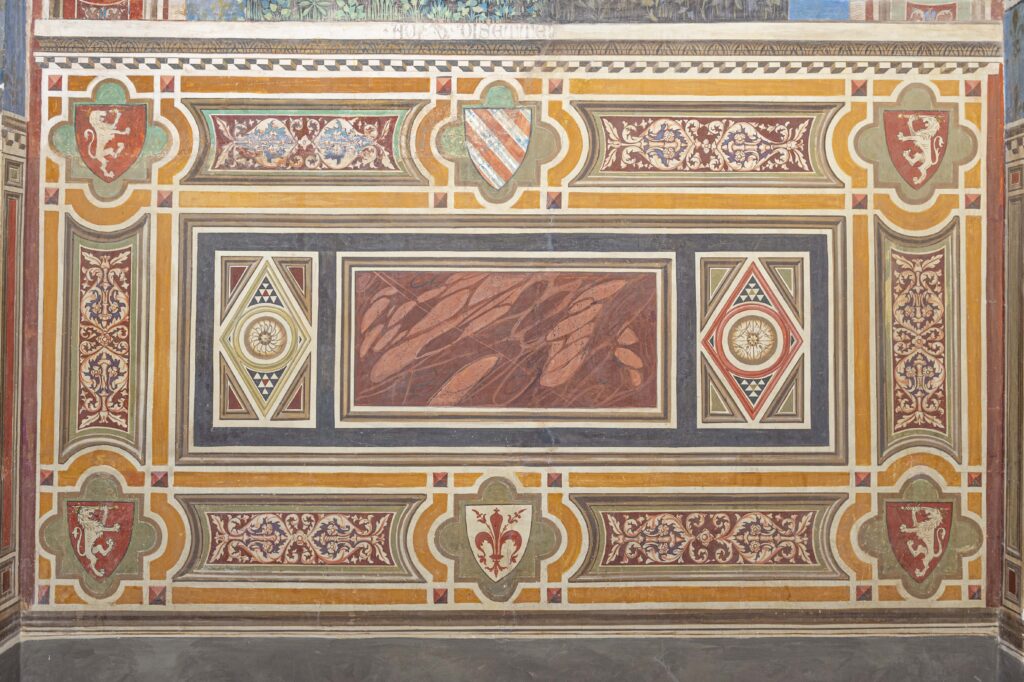
The Town Hall, current seat of the Municipality of San Miniato, was built at the end of the 13th century and used as a residence for the Twelve Lords defenders of San Miniato’s population. Inside there are richly frescoed rooms: the Hall of the Seven Virtues, the Council Chamber and the Oratorio del Loretino (the Private Chapel of the Governors).
It is in the Hall of the Seven Virtues, where in ancient times the township’s governors would convene, that we meet Galileo Chini, with a particular declination of his work, namely that of restorer. It was here in fact that in 1897-98 he set to work to bring new life to the decorations painted in tempera on the walls between the 14th and 15th centuries.
On the walls are painted and carved heraldic coats of arms and helmet symbols that the various rulers left in memory of their work. The uniformity of the decorative apparatus that we admire today is due to the skill of Galileo Chini, who had begun the restoration together with his uncle Dario Chini, at the time considered one of the most important restorers of Florence.
Unfortunately Dario died just as the project had begun, and Galileo completed alone the restoration of an environment that, ruined by years of neglect and abandonment, had to be restored to its original beauty, in a historical moment characterized by the admiration and study of art and medieval culture and the free common. Chini signed and dated his work in one of the false marble plinths of the hall.
The Palace follows the vicissitudes of the city’s history. From the end of the free common to the years of Florentine domination (1370-1500) it undergoes restoration and expansion that will continue in the following centuries. These spaces are accessible and musealized since the early 21st century. The Town Hall Museum is part of a network of the Civic Museums of San Miniato Township.
